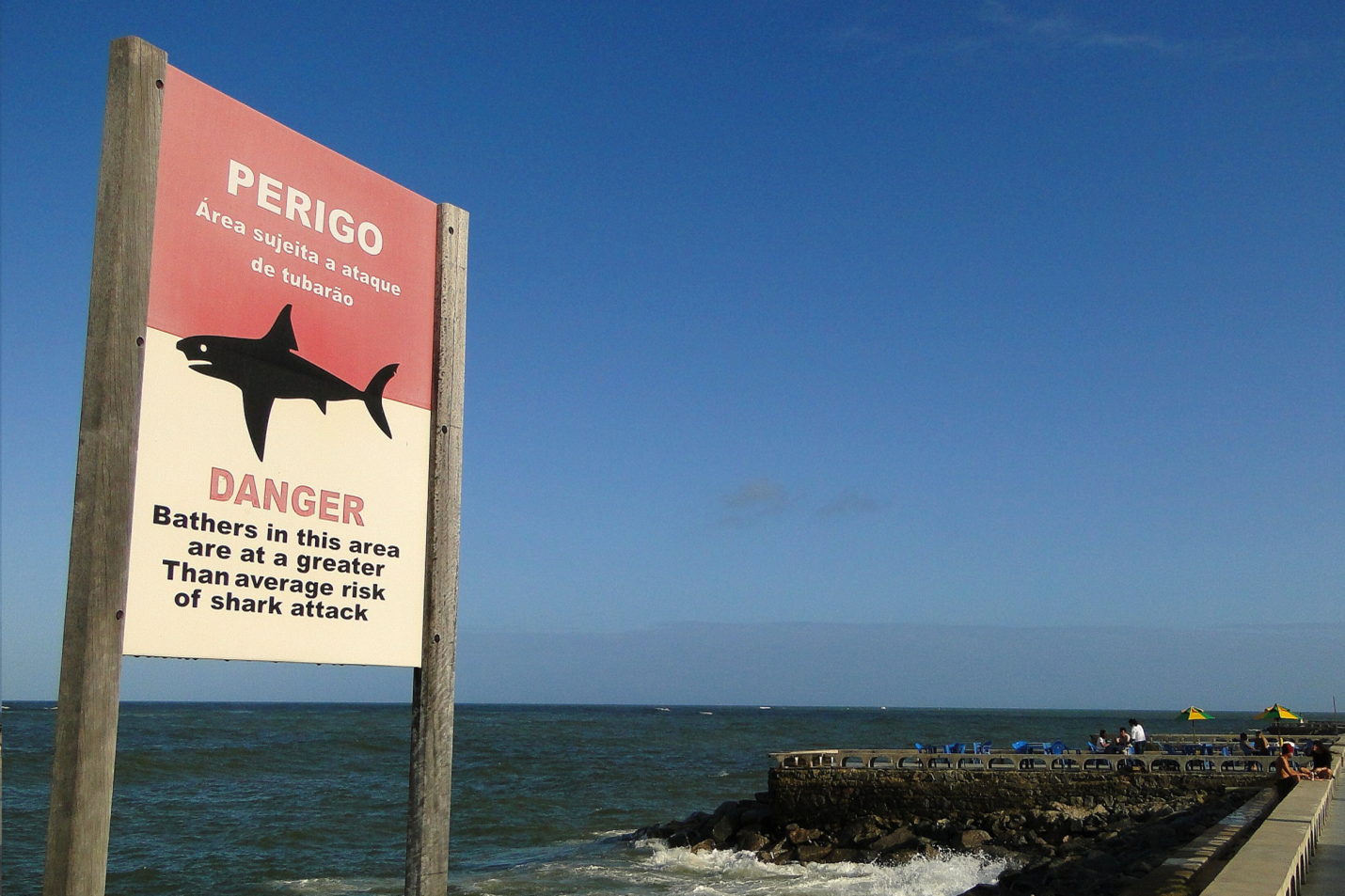Shark Attacks Up in 2023
GAINESVILLE, Fla. --- There was an increase in the number of unprovoked shark attacks worldwide and an uptick in fatalities in 2023 compared to the previous year. The University of Florida’s International Shark Attack File (ISAF), a scientific database of global shark attacks, confirmed 69 unprovoked bites in 2023.
Although this is higher than the most recent five-year average of 63 attacks, the data remain consistent with long-term trends.
Ten of the past year’s unprovoked attacks were fatal, up from five the year before, with a disproportionate number occurring in Australia. Although the country accounted for 22% of all attacks, it made up 40% of fatalities. There were also two confirmed deaths in the U.S., and one each in the Bahamas, Egypt, Mexico and New Caledonia. Other confirmed, non-fatal bites occurred in Costa Rica, Colombia, Brazil, New Zealand, Seychelles, Turks and Caicos, Ecuador (in The Galápagos Islands) and South Africa.
“This is within the range of the normal number of bites, though the fatalities are a bit unnerving this year,” said Gavin Naylor, director of the Florida Museum of Natural History’s shark research program.
The United States had 36 unprovoked attacks, accounting for 52% of incidents worldwide. Of these, two — one in California and another in Hawaii — were fatal. As in previous years, Florida had more shark bites than any other state, with 16 attacks.
While ISAF documents and investigates all bites on humans by sharks, the annual report focuses primarily on unprovoked attacks. These are defined as any instance in which a shark is in its natural habitat and attacks without any human provocation, which includes intentionally approaching a shark or swimming in an area where bait is being used to lure fish. Unprovoked bites are the most useful for studying how sharks behave.
“We’re biologists, and we want to understand the natural behavior of the animals — not the unnatural behavior,” Naylor said.
ISAF’s records include an additional 22 attacks last year that were intentionally or unintentionally provoked. The most common victim activity at the time of provoked attacks was spearfishing.
Surfers and Australia get the brunt of fatal bites
Three fatalities in 2023 occurred at one remote surfing destination off the coast of Southern Australia. The Eyre Peninsula is known for its wild, untamed beaches and phenomenal surf breaks, and despite being challenging to access and navigate, it is an alluring spot for surfers.
The region is home to seal colonies and a high density of white sharks.
“If a white shark is going after a seal and the seal knows it, the white shark hasn’t got a chance,” Naylor said. “Seals are really agile, so the only ones that get caught are the ones that are goofing off and flopping around on the surface. And that’s kind of what a surfer looks like.”
Surfers experienced 42% of bites worldwide, with swimmers and waders a close second at 39%.
Australia, in addition to its white shark populations on the coast, also has bull sharks in and around its estuarine rivers. A fatality from a bull shark attack occurred in early 2023 in a brackish river near the coast.
“Beach safety in Australia is second to none. They're fantastic,” said Joe Miguez, a doctoral student in the Florida Program for Shark Research. “However, if you go to remote regions where beach safety isn’t in place, there is a higher risk of a fatal shark attack. This is because when an attack happens and there is beach safety, you can get a tourniquet on sooner and save the person's life. So, the solution isn’t to not surf. It’s to surf in areas where there's a good beach safety program in place.”
Fatalities caused by white, bull and tiger sharks in 2023
The vast majority of unprovoked attacks are test bites, which occur when a shark misidentifies a human as their preferred prey. When this happens, the shark will typically swim away after a single bite. Some species like white sharks and tiger sharks, however, are large enough that even a single bite can be fatal.
Unusual incidents when a shark continues biting their victim, rather than swimming away, have been documented with tiger sharks, bull sharks and white sharks. This February marks the 50th anniversary of the book “Jaws,” and notably, the number of recorded white shark bites have increased precipitously over the last few decades. This pattern isn’t due to increased aggression from white sharks, but rather a combination of more of people being in the ocean each year and a stronger emphasis placed on reporting bites and fatalities.
Along the banks of the Red Sea in Egypt, an encounter with a tiger shark proved fatal.
“The bite in Egypt stood out because a video shows a tiger shark taking multiple passes at a human in the water. Even though predation events are exceedingly rare, it’s pretty clear that’s what it was,” Miguez said.
The Red Sea has a deep narrow trench in its center and extensive coral reefs. Its deep walls allow fish most often found in deep waters to come unusually close to shore.
“You see pelagic fishes like oceanic white tip sharks only 700 feet off the beach, when usually you have to go 20 miles out to find that species,” Naylor said. “These pelagic animals are used to living in a food desert, so when they come across anything they’ll give it a try. The Red Sea’s geomorphology brings very large, pelagic predatory fishes into juxtaposition with tourists that are diving and enjoying their holiday.”
Shark bites correlated with temperature and population density
Despite the increase, the number of bites and fatalities that occurred in 2023 is within the average for the last decade. Each year, there are consistently fewer than 100 unprovoked bites, making it more likely for someone to win the lottery than to be attacked by a shark.
When there are more attacks, it often means that more people are spending time in the water — not that sharks have become more dangerous. Miguez described it as a numbers game. Increased human activity in sharks’ natural habitats naturally leads to an increase in the number of animal encounters.
Something as simple as a holiday weekend falling on particularly hot days can contribute to a spike in attacks.
Water quality around New York has increased over the last two decades, and experts attribute the greater number of marine mammals — such as whales and dolphins — observed off the coast to bigger fish populations. More fish often means more sharks as well.
This contributed to several bites over a few weeks over the summer, including the first known shark attack in New York City in more than half a century.
“It causes a lot of fear, but the reality is you’re putting a lot of people in the water on a hot day with bait fish in the water,” Naylor said.
Most shark bites typically occur during the Northern and Southern hemispheres’ summers, both because that is when many species are more active and because that is when more people spend time in the water.
While the odds of being bitten by a shark are incredibly low, ISAF provides recommendations for further precautions people can take. These include staying close to shore, not swimming at dawn or dusk, and avoiding excessive splashing.
For more resources, including the full 2023 report, you can visit the International Shark Attack File’s website here: https://www.floridamuseum.ufl.edu/shark-attacks.
The Florida Museum of Natural History has been inspiring people to value and protect the biological richness and cultural heritage of our diverse world for more than a century. Located on the University of Florida campus, the Florida Museum is home to more than 40 million specimens and artifacts, one of the nation’s largest natural history collections. For more Florida Museum research and collections news, visit https://www.floridamuseum.ufl.edu/science/ or follow us on social media, @FloridaMuseum.



